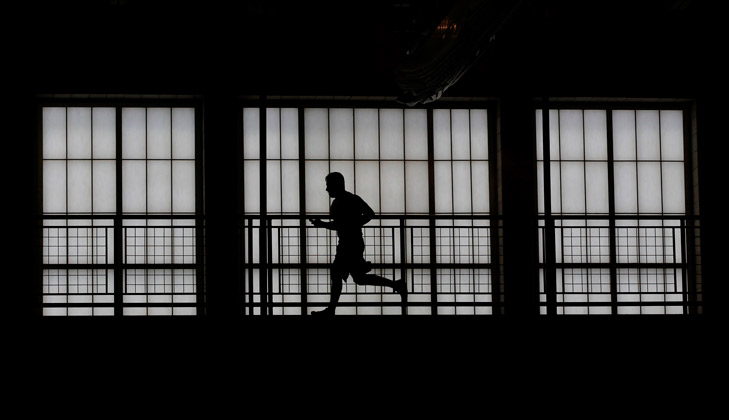The switch from on-campus classes to virtual instruction was unexpected for junior kinesiology student Tashay Woods, but was also a welcome adjustment in many ways. As someone studying exercise science, the break from campus allowed her to hone her knowledge at home, in a more intimate learning environment, while focusing on herself.
Woods, like all Fresno State students and most college students around the nation, is adjusting to the changing landscape of higher education brought about by the spread of COVID-19.
“Getting a sudden break in schedule, while still having a routine in place at home, enforced a mental and physical reset in myself that gave me the boost in energy needed to concentrate on studying and training as hard as I possibly can before having to go back to a regular, demanding schedule,” Woods said.
Woods is a full-time student and, before the City of Fresno’s shelter-in-place order, worked part-time at a kickboxing facility while regularly maintaining her own physical fitness through at-home strength training. When she’s not completing her virtual classwork, Woods makes it a point to stay active at home and apply what she’s learning in class into her own life.
Dr. Mark Baldis, an exercise physiologist and lecturer in the Department of Kinesiology at Fresno State, said it’s important for students to take care of their mental and physical health while at home. He said this notion also applies to anyone adjusting to working or learning from home.
“It is thought that exercising improves mood and decreases anxiety and depression by releasing certain brain chemicals that have this effect,” Baldis said. “Also, exercise improves physical fitness which translates into increased strength, meaning that we can perform our regular tasks with greater efficiency, leading to less fatigue.”
Baldis shared five ways students and the public can maintain physical activity, while practicing social distancing.
- Go for a walk. Baldis said this form of moderate exercise has been proven to reduce stress and anxiety, and when paired with music, the effects are even greater. He said a 10- to 15-minute walk around the house or in the neighborhood, two to three times a day, is ideal.
- Just get moving. Baldis suggests activities that require little to no equipment, like dancing, jumping rope and strength training to start with. “There are thousands of free videos and resources out there, especially on YouTube and on your phone apps,” Baldis said. “I would encourage people to take advantage of these services, especially now with technology being more advanced and accessible.”
- Tai chi. An activity that Baldis regularly engages in himself, he said the slow and steady movements are especially helpful for the older population as it helps them maintain balance and focus.
- Planting a garden and/or yard work. Through this hobby, individuals are able to move their muscles in small but effective ways that will have long-term positive impacts on the body. “Not only does your body benefit, but in a few months you’ll reap the rewards of your hard work with healthy foods from your garden, including vegetables and fruits,” Baldis said. “The benefits are positive all around.”
- Meditation. Letting your mind succumb into a state of relaxation is the key to this activity, Baldis said. He said there are many phone apps with daily meditation exercises and he recommends individuals find an app that best suits their needs.
Above all else, Baldis said it’s important to realize that being physically active does not have to involve exercise.
“You can exercise in other ways without breaking a sweat,” Baldis said. “In fact, health benefits are much greater for people who move more and sit less.”
To learn more about these activities, contact Dr. Mark Baldis at mbaldis@csufresno.edu.





